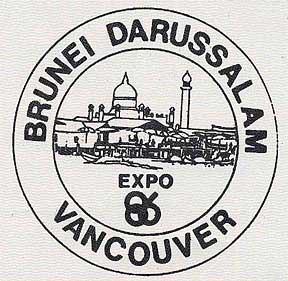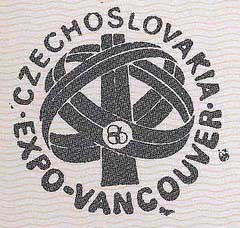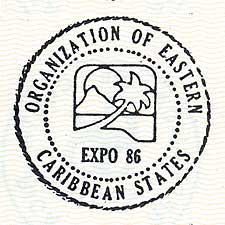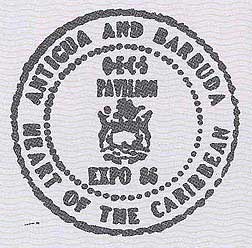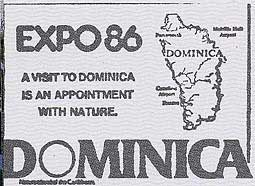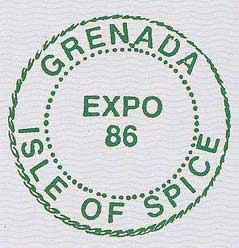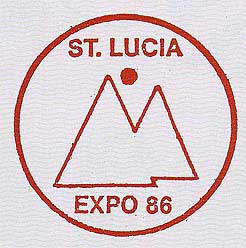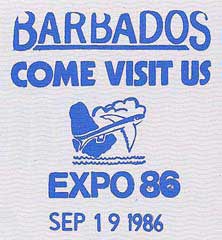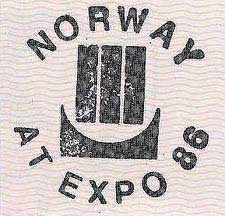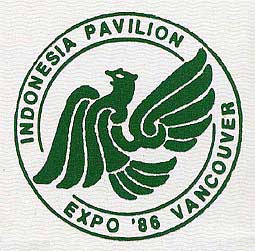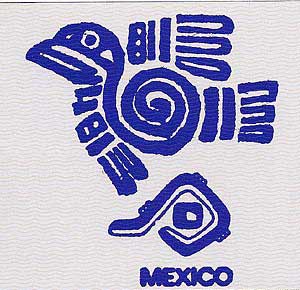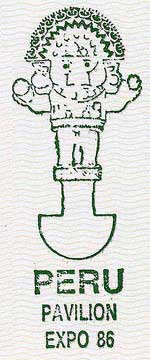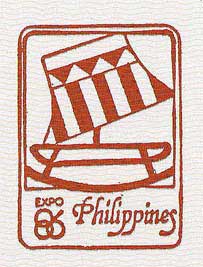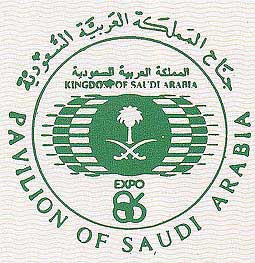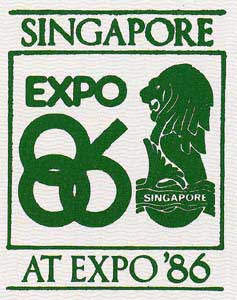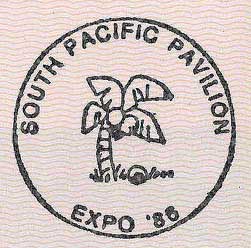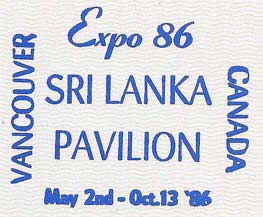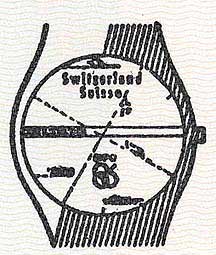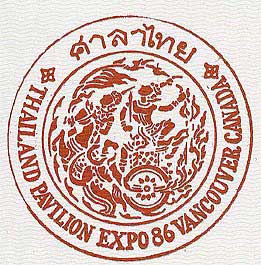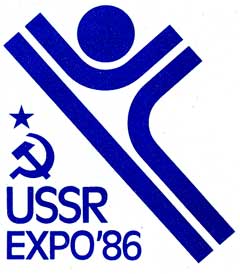 |
|
COUNTRIES & CORPORATE
|
||||||||
|
Brunei Darussalam Many people have never even heard of this tiny Malay Islamic Sultanate, which lies on the northwest coast of Borneo Island and covers 5,765 sq. km. The pavilion attempted to give visitors a quick history lesson of this area, whose modern inhabitants - averaging $17,000 U.S. per capita (1986) annually - have one of the world's highest living standards. The pavilion tells this story mainly in low-tech words and pictures. Believe it or not, it worked. There was a hologram of Brunei Darussalam's international airport. |
Czechoslovakia A Gothic statue holding a video monitor, a cherub perched on a Skoda automobile, Atlas weighed down by a microprocessor - these were a few of the dichotomies the Czechs presented visitors. A preview theatre with cartoon characters and a filmed journey from Vancouver to Prague in the main theatre were mildly entertaining and a suitable warm-up to the assault by video monitors in the main display hall. The restaurant offered soup or salad for $2.50 - 4.80, entrees for $8.10 - 16.70, and desserts from $2.80 - 4.70. Shops: Bohemian cut-glass, porcelain, and rhinestone jewelry were for sale. |
|||||||
|
Eastern Caribbean This pavilion contained seven participating exhibitors representing Antigua/Barbuda, the Commonwealth of Dominica, Grenada, Montserrat, St. Kitts/Nevis, St. Lucia and St. Vincent and the Grenadines. You could stroll through the seven huts to see the crafts and products of these islands. The arts and crafts of the various islands were displayed in huts and a musically accompanied slide show was Projected onto a wall. There was a shop in the back of the pavilion selling crafts including Sea Island Cotton. There were Caribbean delights at the patty shop (spiced meat in pastry), plantain chips, homemade ice cream, and tropical fruit juices. |
||||||||
|
Norway Norway was the only nation at Expo to have two pavilions. The main pavilion on the False Creek waterfront presented modern Norway - maritime technology from off-shore drilling to cargo ships. The imaginative display shoed above and below water exhibits. There was also a film and a delightful restaurant overlooking the Marine Plaza. The second pavilion, Great Norwegian Explorers, was near the Stadium Gate. It told the stories of such famous men as Thor Heyerdahl of the Kon-Tiki raft expedition and Roland Amundsen, first man at the South Pole. |
||||||||
|
Indonesia Indonesia is a land of 3,000 islands and many cultures. Four main exhibits traced transportation from indigenous to modem forms. Two ritualistic canoes dominate the center of the pavilion. The dance was a MUST SEE. Dressed in traditional costumes and accompanied by live musicians playing traditional Indonesian instruments, the dancers mesmerize and entertain the audience. The dances were performed daily at 11:00 a.m., 12 noon, 2:00, 5:00, 6:00 and 8:00 p.m. and last one half hour. Displays included a Javanese royal coach, canoes and, at the Marine Plaza, an Indonesian sailing ship under construction. |
||||||||
|
Mexico Mexico was one of the few nations at Expo to set one part of its display aside exclusively for children. In the stamp room, where children were issued paper,ink and up to a dozen stamps depicting Aztec images,adults are not allowed. But the rest of the pavilion offers adults almost as much fun. Giant paper mache puppets and a made-in Mexico car were pavilion favourites, along with an audio-visual show where more paper mache dolls hanging out the windows of a Mexican bus,blend in with the audience standing along-side. Adjoining restaurant Cantina Ole! A good taste of Mexico. Mariachi bands played here during the evening and outside during the day. A small selection of gold and silver jewelry was offered. |
Peru Gold artifacts and the 700-year-old mummy of a Nazca Indian chief, still wearing a gold headband and a feathered cloak, were featured in one of Expo's surprise pavilions. Museum exhibits stoll the show there, eclipsing reed boats and a pictoral display of transportation from ancient times to the present. The restaurant featured Peruvian shish-kebab, ragout, ice cream and beer. The gift boutique was a display in itself with crafts of gold, lambs wool, and alpaca. The catalogue with details of the exhibits was on sale for $14.00. |
|||||||
|
Philippines This pavilion offered compact yet elegant displays of bamboo, wood and rattan furniture, as well as an impressive display of its watercraft, both traditional and modern. The interior of this pavilion was unique in its attempt to bring the outside indoors. You got the impression that you were travelling away from the bustle of the site outside. The war boats were definitely the major attraction. Outside the pavilion was a Philippine fast-food bar. |
Saudi Arabia A surprising display of technology and culture was in store for you here. The Saudis provided live entertainment and audio-visual shows in a series of small theatres which reflected different architectural styles; there was a mud house, a bedouin tent and a majlis sitting room. The displays reflected Saudi Arabia's rapid modernization of their transportation and communications networks. Native artwork was displayed on the wall by the entrance to the mud house. The film reflected how the growth of Islam and transportation development went hand-in-hand. |
|||||||
|
Singapore Walking into the Singapore pavilion was at first like a stroll down a street of the city-state. A mock-up of Chinese, Indian and Malasian shops creates the atmosphere of Singapore. Inside the pavilion, which was mostley taken up by a round theatre with a 15-minute audio-visual on Singapore, visitors could lounge on the carpeted floor while on all sides flash images of Singapore. Looking up to see the painting portraying a Singapore building. This was largely a no line-up pavilion as most of the exhibits were outdoors. |
South Pacific Aesthetically pure to their origins, the participating countries in this pavilion presented their cultures in a pleasing informative style. Various arts, crafts and artifacts invited you to feel the mystique of this exotic region. Entering the great house past the large god at the entrance, you could find the various countries (Fiji, Western Samoa, Cook Islands, Tonga, Vanratu, Papua New Guinea, Solomon Islands and Nauru) leading from the large central room. The Papua New Guinea display which had breathtaking presentation of their artifacts. Carved masks, figures and shields decorate this room. Noting the traditional dress of the host and hostesses. |
|||||||
|
Sri Lanka The pavilion had a giant alabaster Buddha as its centerpiece. Displays of large gems and batiks showed the colours and richness of this country. Highlights An impressive display of batik and decorated fabrics could be seen overhead. Viewing the gems and jewelled art pieces at the back of the pavilion. There was a video program featuring Arthur C. Clarke, the well-known author. Shops: There was a shop in the pavilion featuring small carvings, jewelry, batiks, masks, tea and curry powder. |
Switzerland You couldn't miss the Swiss pavilion. It was the one with the 24-metre-high wristwatch wrapped around it. And as you might expect from one of Europe's gastronomic centres, the pavilion restaurant was at the heart of the display. But banking, trade and transportation are also part of the Swiss psyche - and a highlight was a simulated rail trip through the countryside Food: The restaurant dominated the interior of the pavilion and may have turned out to be one of the most popular fine dining establishments here. |
|||||||
|
||||||||
|
||||||||
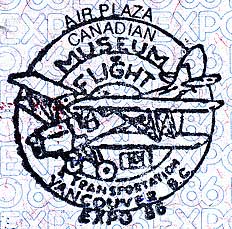
Air Plaza A riot of colorful flying machines suspended like kites inside a towering cubical frame |
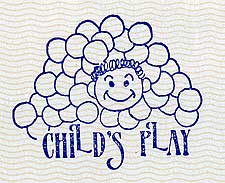 Children's Play Area EXPO 86 had thoughtfully provided an imaginative playground located under the Cambie Street bridge,just off Bridge Station on the Monorail. Children from age 2 to 14 were encouraged to master the Foam Swamp, Chicken Climb, and Beverley Bounce amoungst other fanciful play exhibits. There was an entrance fee charged. It was NOT a babysitting service. |
|||||||
|
|
||
